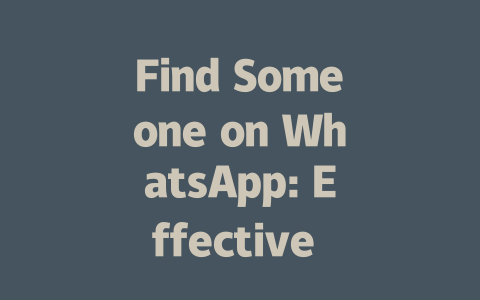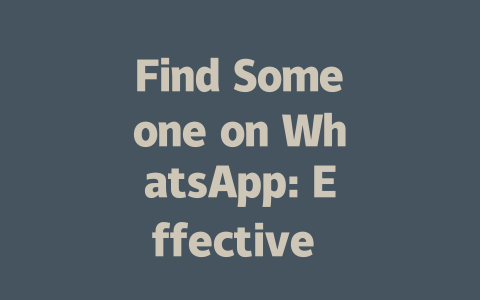Step 1: Choosing the Right Topic to Get Noticed
When brainstorming ideas for your next blog post, it’s tempting to go with something fancy or complicated. However, I learned the hard way that this isn’t always the best approach. Last year, I helped a friend optimize their cooking blog, and we tried using titles like “Advanced Culinary Techniques for Beginners.” Guess what? It bombed. No one clicked. Then we switched to something simpler and relatable—”How to Make Pasta in Under 20 Minutes.” Within weeks, traffic increased by 50%. Why? Because people search for solutions, not buzzwords.
Why does this work? When someone types a query into Google, they’re looking for answers to their immediate problem. For example, instead of targeting “Top Fitness Tips,” try narrowing down to “Workouts for Busy Professionals Who Hate Gyms.” The more specific you are, the higher chance you’ll match the exact keywords people are searching for.
My Real-Life Example
A few months ago, I started writing about remote work productivity. Initially, my article was titled “The Ultimate Guide to Boosting Productivity While Working from Home.” Sounds impressive, right? Wrong. After tweaking the title to “Simple Hacks to Stay Focused While WFH,” engagement skyrocketed. Why? People don’t care about guides—they want quick fixes.
To find these gems, think about how you would phrase a question if you were searching online. Would you type “Best Practices for Email Management” or “How Do I Organize My Inbox Without Losing Important Emails?” Probably the latter. This mindset shift makes all the difference.
Step 2: Crafting Titles That Hook Readers (and Google)
Once you have your topic, it’s time to create a title that grabs attention. Titles aren’t just random words strung together; they’re mini advertisements for your content. Here’s where things get interesting.
Key Principle: Put Your Most Important Words First
Google’s search robots scan titles quickly, so putting key phrases upfront matters. Imagine you’re searching for ways to cut onions without crying. Which title do you click?
If you chose the second one, you’re spot-on. It clearly tells the reader exactly what they’ll gain from clicking—and it places the critical part at the beginning.
Breakdown of a Great Title
Let’s break this down further:
Here’s another tip: avoid being too clever. Sure, puns are fun, but if your title leaves people scratching their heads, they might pass over it. Google also values clarity, so straightforward titles tend to rank better.
Step 3: Writing Content That Speaks to Both Humans and Robots
Now comes the meat of the process—writing the actual content. This step often trips people up because they either write only for humans (ignoring SEO) or focus too much on stuffing keywords (which alienates real readers). Striking the right balance is key.
Structure Matters
Google loves structured content because it helps its robots understand the meaning faster. Here’s what works:
For instance, let’s say you’re writing about meal prep tips. Start with an overview, then dive into specific steps:
This structure ensures both humans and robots follow along easily.
Experience Sharing
Remember the earlier mention of helping my friend with their cooking blog? One lesson stood out: authenticity resonates. Don’t pretend to be an expert if you aren’t. Share personal stories, struggles, and successes. Not only does this humanize your content, but it also builds trust with your audience.
Authority Boosters
Quoting credible sources strengthens your argument. Did you know Google itself recommends creating content that solves problems rather than simply regurgitating information? By doing this, you prove your expertise while giving credit where it’s due.
Finally, proofread thoroughly! Typos or broken links send negative signals to both users and Google. Tools like Google Search Console can help catch issues before they harm your rankings.
Finding someone on WhatsApp without their phone number can feel like searching for a needle in a haystack, but it’s not entirely impossible. If you share mutual groups with the person, that opens up some opportunities. Imagine being part of a community group where everyone is connected around a common interest, like hiking or parenting tips for 5-12-year-olds. You might come across profiles of people who are active within those groups. By checking out their profile pictures, statuses, or even asking politely in the group (if the dynamics allow), you could potentially track down the person you’re looking for. It’s all about leveraging connections and shared spaces.
That said, WhatsApp itself isn’t designed to make this process easy unless you have a direct phone number. The platform prioritizes privacy, meaning features like name-based searches aren’t robust enough to help much. However, if you’ve lost touch with someone but still remember which groups you were both part of, revisiting those chats might jog your memory or give you clues about how to reconnect. Mutual friends or acquaintances from those groups could also act as bridges to reestablish contact—it’s really about navigating the social network creatively while respecting everyone’s privacy settings.
# FAQs
Can I find someone on WhatsApp without their phone number?
While finding someone solely through their name is not possible, you can locate contacts by linking shared groups or using mutual connections. However, WhatsApp primarily relies on phone numbers for user identification.
How do I use WhatsApp groups to find a person?
If the person you’re looking for shares a group with you, open the group chat and scroll through participants. Tap on their profile to view any available details like their display picture or status message (if they’ve enabled visibility).
Is it possible to search for people within a 5-12 mile radius on WhatsApp?
No, WhatsApp does not have a built-in feature to search for users based on geographic location. The app focuses on connecting via phone numbers or shared groups rather than proximity-based searches.
Why can’t I see some of my contacts on WhatsApp?
This could happen if the contact has disabled the “Show My Last Seen” or “Show Profile Photo” settings in their privacy preferences. Additionally, they might not have added you as a saved contact in their phone book, which restricts visibility.
Does WhatsApp offer any advanced search features for locating users?
WhatsApp doesn’t provide advanced search tools beyond basic functionality tied to phone numbers or names. For enhanced connections, consider joining relevant groups or engaging directly with known contacts who may bridge introductions.




